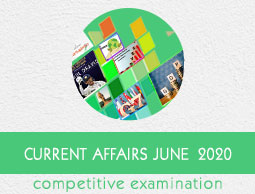
- Appointments
- Awards
- Bills & Acts
- Books & Authors
- Committees
- Deaths
- Defence
- Economic
- Environment
- Finance
- Important Days
- International
- Miscellaneous
- National
- Persons in News
- Places in News
- Regional
- Reports
- Resignations & Retirements
- Science & Technology
- Sports
- June 2020 - Exams Resources
- Current Affairs - Quiz
- Current Affairs - Test
- Current Affairs - PDF
Current Affairs June 2020 - Science & Technology
1 - SpaceX's Dragon spacecraft docks at ISS after historic launch
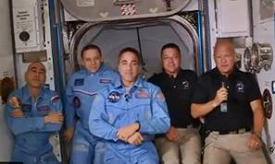
SpaceX's Dragon spacecraft with two NASA astronauts, Bob Behnken and Doug Hurley, successfully docked with the International Space Station after a historic launch from the Kennedy Space Center in Florida. It has marked the dawn of a new age in commercial space travel.
With this, SpaceX became the first private company to launch people into the orbit, a feat achieved previously by only three governments: the US, Russia and China.
2 - ATLAS telescope discovers first-of-its-kind asteroid
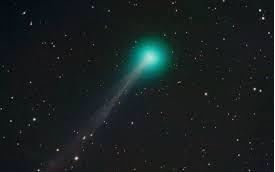
The University of Hawaii Asteroid Terrestrial-impact Last Alert System (ATLAS) has discovered the first known Jupiter Trojan asteroid to have sprouted a comet-like tail. ATLAS is a NASA-funded project using wide-field telescopes to rapidly scan the sky for asteroids that might pose an impact threat to Earth.
The newly discovered asteroid named 2019 LD2 has an orbit like an asteroid but the tail of a comet. It shares Jupiters orbit in an asteroid swarm known as the Jupiter Trojans.
3 - Astronomers confirm the Earth-sized planet at Proxima Centauri
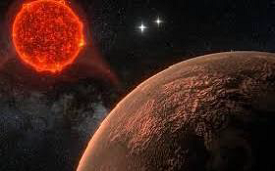
An international team of scientists including researchers from the University of Geneva (UNIGE) have confirmed the existence of a planet similar in size to Earth orbiting the nearest star to the sun, Proxima Centauri. The ESPRESSO spectrograph on the Very Large Telescope (VLT) in Chile has provided the confirmation. The new planet is called Proxima Centauri b.
As per the findings, Proxima b is 1.17 times the mass of Earth, smaller than the older estimate of 1.3 times. It orbits its star in just 11.2 days.
4 - Birth of New Planets witnessed first time in human history
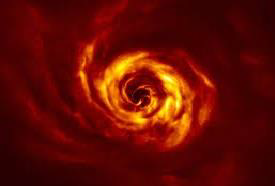
The SPHERE instrument of the Very Large Telescope has captured the birth of new planet in the AB Aurigae star system recently. This is the first time in human history the birth of a star was witnessed.
The birth of the new star was depicted by the European Southern Observatory. The image depicts orange mass of gas. The mass showing the cosmic matter of the universe at gravitational tipping point is exactly the sign for a star system to be born. The spiral formation confirms the presence of a baby planet.
5 - NCL Pune developed indigenous nasopharyngeal swab for collecting samples

The National Chemical Laboratory (NCL), Pune successfully developed an indigenous nasopharyngeal (NP) swab for collecting samples from the throat cavity of patients affected with Corona Virus which causes the Covid-19. A team of three scientists, Chandrashekhar V Rode, Dr Prakash P Wadgaonkar and Dr Anuya A Nisal worked on the specifications of nasopharyngeal swab polymers and adhesives.
The nasopharyngeal swab is a medical device with stringent specifications of quality, polymer grade, dimensions and sterilisation. It consists of a cylindrical plastic stick with a brush-like tip of synthetic bristles/flocks. The NCL is a lab under the Council for Scientific and Industrial Research.
6 - CeNS developed low-cost catalyst for hydrogen generation from water

Scientists from The Centre for Nano and Soft Matter Sciences (CeNS), an autonomous institute of the Department of Science and Technology (DST), have found out a low cost and efficient way to generate hydrogen from water using Molybdenum dioxide as a catalyst.
Hydrogen is considered as the future of clean and sustainable energy as it can be generated from water and produces water on energy generation without any carbon footprint. Hydrogen can be directly used as a fuel similar to natural gas or as input for fuel cells to generate electricity.
7 - Astronomer unveiled magnetic field of Solar Corona
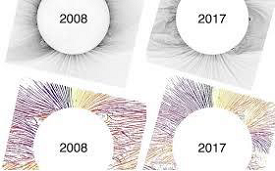
A new study by IFA graduate student Benjamin Boe unveiled the magnetic field of the solar corona. The magnetic field is produced in the interior and extends outward. The corona is most easily seen during a total solar eclipse, when the moon is directly between the Earth and the sun, blocking the bright surface of the sun. When the blinding brilliance of the Sun is obscured, corona comes into view.
The magnetic field lines of solar corona were recorded for over 14 eclipses that occurred in two decades. The study has found that the coronal magnetic field is non-radial to at least four solar radii.
8 - IIT, Hyderabad researchers developed Artificial Intelligence-based test kit for COVID-19
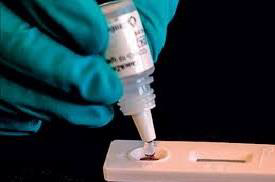
Researchers at the Indian Institute of Technology-Hyderabad developed a low cost and Artificial Intelligence-based test kit for COVID-19. These kits can give results in about 20 minutes. The test kits are Reverse Transcription Polymerase Chain Reaction (RT-PCR)-free and get rid of many processes.
The cost of COVID testing with these IIT-H Bio-Chips will be around 600 rupees and can be almost halved in case of mass production of the chips. These kits can be transported to rural areas as they are very light and helpful to increase the testing for COVID-19 in the country.
9 - ARCI & Mekins developed UVC-based multipurpose disinfection cabinet
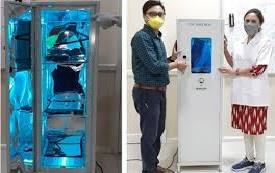
International Advanced Research Centre for Powder Metallurgy and New Materials (ARCI) and MEKINS Industries have co-developed a UVC-based Cabinet for disinfecting non-critical hospital items, laboratory wear, and PPEs in the research laboratories to prevent surface contamination of COVID 19. It can also be used to disinfect items exhibited to customers in commercial establishments and several domestic items.
A compact UVC disinfection cabinet consists of four UVC lamps of 30W (on sides) and two lamps of 15 W (top and bottom). The irradiance intensity is measured at various points within the box to assure sufficient radiation to disinfect all the placed articles within 10 minutes.
10 - ARCI developed rare earth based magneto-caloric material for cancer treatment
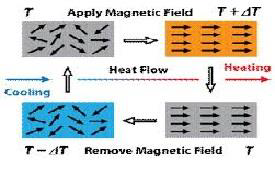
Scientists at the International Advanced Research Centre for Powder Metallurgy and New Materials (ARCI) developed a rare-earth-based magneto-caloric material that can be effectively used for cancer treatment. The magneto-caloric materials are certain materials in which application and removal of a magnetic field causes the materials to become warmer or cooler. These magneto-caloric materials can provide controlled heating to kill the tumor cells is between 40 and 45C.
The advantage of magneto-caloric materials which heat up or cool down with the application and removal of the magnetic field, respectively is that as soon as the magnetic field is removed, cooling effect is generated.
11 - ISRO signed MoU with ARIES

Indian Space Research Organisation (ISRO), Bengaluru signed MoU with Aryabhatta Research Institute of Observational Sciences (ARIES), Nainital for co-operation in the field of Space Situational Awareness (SSA) and Astrophysics. This MoU will pave the way for future collaborations between ISRO and ARIES in establishing optical telescope observational facilities for space object tracking, R&D studies in space weather, astrophysics and Near Earth Object (NEO).
Space objects orbital tracking, analysis and space weather studies are important aspects in Space Situational Awareness & Management to safe guard Indian space assets from critical conjunction threats from space debris.
12 - CSIR-CDRI candidate drug Umifenovir secures DCGI approval for phase III clinical trial against COVID-19
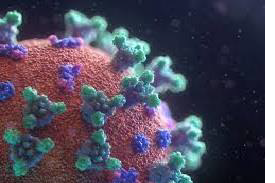
CSIR constituent lab CSIR-Central Drug Research Institute (CDRI) Lucknow, has received permission for carrying out Phase III randomised, Double blind, Placebo controlled trial of efficacy, safety and tolerability of antiviral drug Umifenovir. This drug has a good safety profile and acts by preventing entry of virus into human cells and also by priming the immune system.
Umifenovir is used to treat influenza. CSIR-CDRI has licensed the economical process technology for manufacturing and marketing the drug to M/s. Medizest Pharmaceuticals Private Ltd. Goa, who have already received test license from DCGI.
13 - Fifth State of Matter observed by NASA scientists
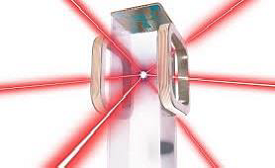
NASA scientists observed the fifth state of matter Bose-Einstein Quantum in space for the first time. Bose-Einstein condensates (BECs) - the existence was predicted by Albert Einstein and Indian mathematician Satyendra Nath Bose almost a century ago. They are formed when atoms of certain elements are cooled to near absolute zero (0 Kelvin, minus 273.15 Celsius).
Scientists reported that BECs research will help in mysterious phenomena such as dark energy, gravitational waves to spacecraft navigation and prospecting for subsurface minerals on the moon and other planetary bodies.
14 - ISRO gets Indian patent for liquid cooling and heating garment
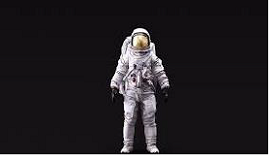
The Indian Space Research Organisation (ISRO) has got an Indian patent for its liquid cooling and heating garment (LCHG) that is suitable for space applications. The patent is valid for 20 years from the date of application, which is February 8, 2016. The liquid cooling and heating garment is a protective garment for human space flight.
The LCHG is a close-fitting long garment which covers the wearer's torso as well as limbs, from neck to toe. The four inventors of LCHG are Srirangam Siripothu, Reshmi Balachandran, Saraswathi Kesava Pillai Manu, and Gurumurthy Chandrasekaran.
15 - IIT-Bombay developed chip Dhruva

IIT-Bombay has developed a receiver chip -Dhruva. It can be used in smartphones and navigation devices to find locations and routes within the country. Dhruva will receive signals from Indias NAVIC group of navigation satellites as well as the US Global Positioning System-based satellites to determine these accurately under all weather conditions.
The Dhruva project was funded by the Ministry of Electronics and Information Technology (MeitY), with SAMEER (Society for Applied Microwave Electronics Engineering and Research) as the nodal agency.
16 - Indigenously developed ULV Sprayer successfully completed trials for locust control

Department of Agriculture under Make in India initiative announced launch of indigenously developed a vehicle mounted ULV sprayer for locust control. The trials of the sprayer have been successfully conducted in Ajmer and Bikaner district of Rajasthan.
This is a major breakthrough to end the dependence of importing spray of locust control. Food and Agriculture Organisation (FAO) of the United Nations has appreciated that India is the first country in the world which is controlling Desert Locust through Drones.
17 - Last Satellite of Chinas BeiDou Satellite System 3 (BDS-3) launched
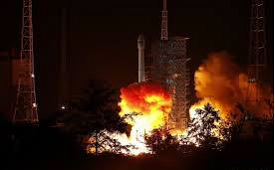
China successfully launched the final member in its Beidou satellite. It is 35th and the final satellite of BDS-3. The first BDS-3 satellite was launched in 2015. BeiDou Navigation Satellite System consists of two separate satellite constellations.
The final BDS satellite weighing about 10,000 pounds, is the largest of its kind and is filled with propellants for maneuvers in orbit. The spacecraft is designed to work in orbit for at least 12 years. The satellite was carried by a Long March-3B carrier rocket.
18 - Heteros injectable Covifor received DCGI approval for COVID-19 Treatment

Hetero's antiviral drug Covifor received DCGI approval to treat Covid-19 patients. It is named as COVIFOR (Remdesivir). Covifor will be made available in 100 mg vial (injectable) which has to be administered intravenously in a hospital setting under the supervision of a healthcare practitioner.
Covifor will be formed under a licensing agreement with Gilead Sciences Inc to expand access to Covid-19 treatment. Remdesivir is permitted for treatment of suspected or laboratory-confirmed cases of Covid-19 in adults and children with severe symptoms.
19 - CSIO developed precision safety eyewear for healthcare professionals treating COVID-19 patients
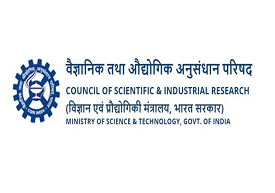
Central Scientific Instruments Organisation (CSIO) has developed a technology for precision manufacturing of Safety Goggles for healthcare professionals involved in treating high viral load patients as in the case of COVID-19 pandemic. The technology was transferred to Sark Industries, Chandigarh for its commercialisation and mass production.
The developed protective eyewear is ergonomically designed to provide full cover and efficient sealing to the eye area and would protect the healthcare professionals from hazardous aerosols as well as other suspended particles. It consists of a sturdy polycarbonate lens and adjustable elastic strap for ease of wearing.
20 - Russias Energia planned to take first tourist on space walk in 2023
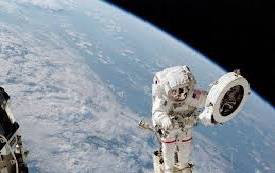
Energia Space Corporation of Russia announced to take the first tourist on a space walk in 2023, under the terms of a new contract with a US partner. Under this new contract, NASA signed a deal with US Virgin Galactic space tourism company to promote private missions to the station post a special training program in the US.
This first tourist will become the first private citizen in history to experience open space. Roscosmos space tourism will launch citizens into space.